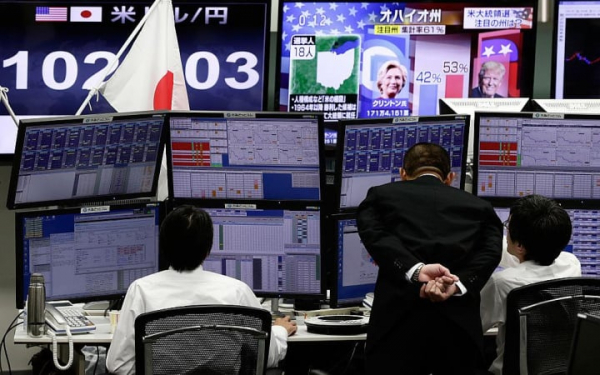On the last day of trading of the financial year, which in Japan runs from April 1 to March 31 of the following year, the Nikkey-225 index rose by 0.5%, and since the beginning of 2024 by 44%. Over the past 12 months, it has increased by 12,328 points to 40,369.44 points. — Daniil Getmantsev, Chairman of the Verkhovna Rada Committee on Finance, Tax and Customs Policy, writes about this on his Telegram page.
On February 22, the previous historical record was surpassed, recorded in 1989 during the so-called “golden era” of the Japanese economy (although some analysts call that period the “bubble” era, after which the country fell into many years of stagnation).
After that, Nikkey-225 updated records almost every exchange session.
The two main drivers pushing up the Japanese stock market are shares of high-tech companies and the real estate sector (the latter grew by 16% in March alone).
Read also: Treasuries are going down: which bonds can be bought at a profit
The continued weakening of the yen and the ultra-loose monetary policy of the country's central bank created additional attractiveness for the Japanese securities market.
Although the Bank of Japan abandoned (the last in the world, 17 years after its introduction) from negative interest rates, the caution with which it changes policy and the interest rates offered on deposits still create extremely attractive conditions for investing in Japanese securities. After all, their growth can bring greater profit than a bank deposit.
Read also: Inflation is slowing down: why the NBU maintains a policy of expensive money
What is the Nikkei 225
Index Tokyo Stock Exchange – Index Nikkei 225 Stock Average – the key stock index of Japan, one of the main stock indices in the world and an important tool for macroeconomic analysis.
In September of each year, the composition of the Nikkei 225 is reviewed and already in the next month – October – change. All companies included in the index are selected from the 450 most liquid companies in the country.
The Tokyo Stock Exchange is one of the largest in the world, works with more than 2,000 companies and is second only to the New York Stock Exchange in capitalization. Most of the companies on the stock exchange are companies that are in one way or another involved in the development of technologies and modern solutions.

